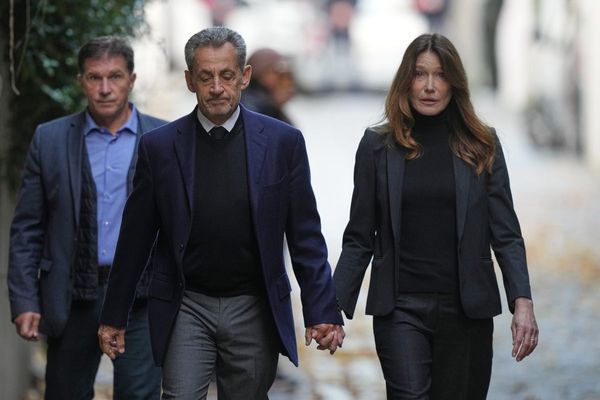
Back on Aug. 28, Phillies designated hitter Kyle Schwarber slammed four home runs in a 19–4 win over the Braves. He became the fourth Philadelphia player ever to do so, joining a trio of Hall of Famers.
One—third baseman Mike Schmidt—played within living memory of a probable majority of Phillies fans. Though his career ended during World War II, it's not inconceivable that some elderly Philadelphia backers remember outfielder Chuck Klein.
And then there's Ed Delahanty. Delahanty, who hit four home runs in a game against the Chicago Colts (today's Cubs) in 1896, played for the Phillies and two other teams from 1888 to 1903. Today, he is known primarily for the bizarre, sad circumstances of his death—you'll see his story pop up on social media from time to time, the deep-historical fodder of YouTube rabbit holes.
What happened to Delahanty, and how good was he? As Schwarber and Philadelphia eye history this postseason, let's go back in time and examine one of baseball's most fascinating players.
Who was Ed Delahanty?
In the 1880s, as in our own time, Major League Baseball was filled with first- and second-generation immigrants looking to make a name for themselves in the United States. That was the case for Delahanty and his brothers, born to Irish parents in Cleveland in 1867. In total, five Delahantys would play in MLB: Ed, Frank (six years for four teams, primarily the Yankees), Jim (13 years for eight teams, primarily the Tigers), Joe (three years, all with the Cardinals), and Tom (three years for four teams, primarily the Cleveland Spiders).
Per John Saccoman's indispensable SABR bio, Ed played for two teams in the then-anarchic minor leagues: Mansfield in the Ohio State League in 1887 and the Wheeling National Citys in the Tri-State League in '88. From these Midwestern leagues the Phillies plucked Ed in '88; it took awhile for the avid drinker to marshal his considerable talents, but once he did, Philadelphia had a star on its hands.
How good was Ed Delahanty?
In The New Bill James Historical Baseball Abstract, a famous baseball book written around the turn of this century, James cites a comparison made in the 1930s between Ed and Yankees center fielder Joe DiMaggio. That's how good he's reputed to have been—a consummate five-tool player in an era filled with them. Over the course of his career, Ed led his league in batting average twice, home runs twice, RBIs three times, steals once, on-base percentage twice, slugging percentage five times, and bWAR three times.
His best offensive season was probably 1899, when he led the National League in bWAR with 8.0. That year, he slashed .410/.464/.582 with nine home runs, 137 RBIs, and 55 doubles. However, one could plausibly argue he was better in '96 (when he had a career-best 190 OPS+), or 1893 (when he clubbed an outrageous 19 home runs and drove in 146 runs), or 1895 (when he got on base half the time; his on-base percentage was .500 on the dot), or even 1902 (when he led the then-new American League in every slash category).
How did Ed Delahanty die?
In 1903, Ed was in his second season with the Washington Senators, to whom he had jumped in the early years of the American League. He was in atrocious financial straits, having ostensibly signed a $4,500 contract with the Senators for the '03 season while also staring down the consequences of making an under-the-table agreement with the Giants (he was legally obligated to pay back a $4,000 advance). By late June, his mental health had deteriorated so significantly that he insured his life and began giving away his valuables; by the time he broke with Washington his teammates were regularly monitoring his welfare.
A family intervention in Detroit went nowhere, and in early July he boarded an overnight train from Michigan to New York. Quickly becoming inebriated, Ed was ejected from the train by an irate conductor near the border between Ontario and New York. Whether he jumped or fell from the International Railway Bridge into the Niagara River is unknown, but the 35-year-old's body was found on the Canadian side of Niagara Falls a week later.
What is Ed Delahanty's legacy?
"Big Ed," as he was nicknamed, can still be found all over the Phillies' and MLB's record book. Only Schmidt, Robin Roberts, Steve Carlton and Chase Utley accumulated more WAR. His .348 batting average for the team trails only teammate Billy Hamilton (and his .346 lifetime clip ranks eighth). He's second in franchise history in runs, fourth in hits, second in doubles, and third in triples. You don't have to look far; in May, Philadelphia acknowledged as such by retiring his "number."
More than numbers, however, he stands as a symbol in several respects. He was one of Philadelphia's first sports stars, helping begin the city's love affairs with big personalities unafraid to color outside the lines. His humble origins, outsized life, and tragic death made him an avatar of the early Irish American crop of athletes as they coped with a xenophobic society. Most of all, perhaps, Ed represents the enduring allure in the Information Age of the early days of baseball—a brutish, mysterious era whose impact on our own is easy to see but difficult to truly grasp.
More MLB on Sports Illustrated
This article was originally published on www.si.com as The Tragic Story of Phillies Hall of Famer Ed Delahanty.







